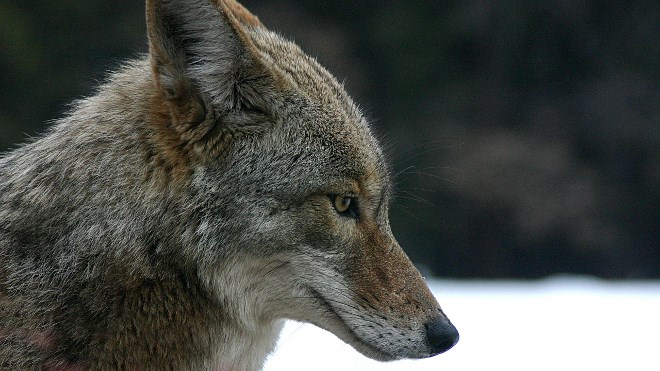Coniston residents Kari Huntington and Barb Deschamps both say they've heard about a dog being taken by coyotes from a backyard in the community, and eaten in a nearby playground.
“Two young boys came upon this and tried to chase the coyotes away,” Huntington said, adding that several neighbourhood dogs have gone missing. “The owner got what was left of the dog, which wasn't much.”
Huntington said she's seen coyotes on seven different occasions, and also came face-to-face with two wolves. Deschamps said she's seen coyotes on three different occasions.
“They strut down the sidewalk like they own the town,” Huntington said, adding that she'd like to see the animals trapped. She said she fears for her dog, as well as other people's pets.
But officials with both the Ministry of Natural Resources and Forestry (MNRF) and the City of Greater Sudbury say there's not much they can do.
In an email, MNRF spokesperson Adriana Pacitto said the ministry does not trap and relocate coyotes. “Relocated coyotes will simply return to the areas from which they were removed,” she said.
Instead, the ministry provides advice to residents, including encouraging people to keep their property clean of coyote attractants such as garbage and food and keeping their pets leashed and supervised.
Under the province's Fish and Wildlife Conservation Act, however, a person may harass, capture or kill wildlife damaging or about to damage their property, which includes their pets, Pacitto said.
Licensed small-game hunters or trappers may act on a property owner's behalf. Local discharge of weapon bylaws must be followed, though, she warns.
Sudbury Area Trappers Council member Paul Van Zutphen said local trappers are willing to help out homeowners dealing with nuisance animals.
However, most trappers are leery of setting traps in residential areas, he said, and you must find the trapper assigned to that particular region.
Shelley Ahmed, a communications adviser with the City of Greater Sudbury, said there's no city bylaws to regulate or control wildlife.
“However, if residents feel they are being endangered, they should call 911,” she said. This is also advice given by the MNRF.
An official who works in the Ministry of Natural Resources and Forestry's local office previously told NorthernLife.ca he's had more coyote reports this year, and the numbers may be on the upswing.
Derrick Luetchford, a partnership specialist with the ministry, said they're not uncommon in urban areas. He said coyotes have a harder time finding food in the wintertime, and spend more time in the city to find something to eat.
The animals are also just more visible in the wintertime, when there's no undergrowth or leaves on trees, Luetchford said.
Michelle Hicks of Hanmer said she's had several coyote sightings in her backyard, and has heard their cries on occasion as well. She said she phoned the MNRF to report the sightings.
“I've told people when I've seen people with little dogs, watch your dogs, because there's coyotes,” she said.
Homeowners interested in contacting the Sudbury Area Trappers Council are asked to phone president Brent Chmilar 705-586-1905.
Join Sudbury.com+
- Messages
- Post a Listing
- Your Listings
- Your Profile
- Your Subscriptions
- Your Likes
- Your Business
- Support Local News
- Payment History
Sudbury.com+ members
Already a +member?
Not a +member?
Sign up for a Sudbury.com+ account for instant access to upcoming contests, local offers, auctions and so much more.
